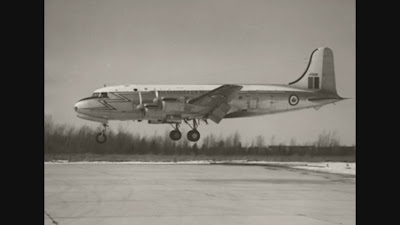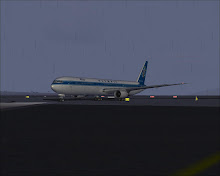Friday, September 30, 2011
DC-1:Vintage aircrafts
The Douglas DC-1 was the first model of the famous DC (Douglas Commercial) commercial transport aircraft series. Although only one example of the DC-1 was produced, the design was the basis for the DC-2 and DC-3.
Development of the DC-1 can be traced back to the 1931 crash of TWA flight 599, which had suffered a structural failure of one of its wings, probably due to water which had over time seeped between the layers of the wood laminate and dissolved the glue holding the layers together
It was designed as a series prototype for TWA to compete against the revolutionary Boeing Model 247 ordered by Boeing subsidiary United Air Lines.
The DC-1 was very advanced for its day. Its fuselage was streamlined, as were its wings and engine cowlings. It featured all-metal construction and retractable landing gear. Variable-pitch propellers gave the plane remarkable takeoff and landing characteristics. With plush seats, a kitchen and a comfortable restroom, the DC-1 set a new standard for passenger comfort.
Great efforts were made to insulate the passenger compartment from the noise of the plane's engines. The plane's passenger seats were mounted on rubber supports, while the cabin was lined with noise absorbing fabric. Carpet covered the cabin floor and even the engines were mounted on rubber insulators.
Specifications
| |
First flight:
|
July 1, 1933
|
Wingspan:
|
56 feet
|
Length:
|
60 feet
|
Height:
|
16 feet
|
Ceiling:
|
23,000 feet
|
Range:
|
1,000 miles
|
Weight:
|
17,500 Pounds
|
Power plant:
|
Two 710-horsepower Wright engines
|
Speed:
|
190 mph
|
Accommodation:
|
2 crew, 12 passengers
|
Wednesday, September 28, 2011
BOEING 247:VINTAGE AIRCRAFTS
The revolutionary Boeing Model 247, developed in
1933, was an all-metal, twin-engine airplane and the first modern passenger
airliner. Considered the first such aircraft to fully
incorporate advances such as all-metal, semi-monocoque construction, a fully cantilevered wing and retractable
landing gear. Other advanced features included a gyro panel for instrument
flying, an autopilot, pneumatically operated de-icing equipment, a
variable-pitch propeller and retractable landing gear.
the 247 was capable of crossing the United States
from east to west eight hours faster than their predecessors, such as the Ford
Trimotor and Curtis Condor. Entering service on May 22, 1933, a Boeing Air
Transport 247D set a cross-country record pace of 19½ hours with seven stops on
its San Francisco and New York inaugural flight. Flying with 189 mph its
trip was seven and a half hours shorter than that made
by any previous airliners.
The Boeing 247 introduces reliability, safety and
comfort in air travel and together with DC-2
aviation entered
the age of speed. The Boeing
design had been the first to enter series production, the 247 proved to have
some serious design deficiencies. Air carriers considered its limited capacity
a drawback since it only carried 10 passengers, in five rows with a seat on
each side of the aisle, as well as a flight attendant.
The 247s remained in airline service until World
War II
| First flight: | Feb. 8, 1933 |
|---|---|
| Model number: | 247 |
| Classification: | Commercial transport |
| Span: | 74 feet |
| Length: | 51 feet 7 inches |
| Gross weight: | 13,650 pounds |
| Top speed: | 200 mph |
| Cruising speed: | 189 mph |
| Range: | 745 miles |
| Ceiling: | 25,400 feet |
| Power: | Two 500-horsepower P&W Wasp engines |
| Accommodation: | 3 crew, 10 passengers, 400 pounds of mail |
Tuesday, September 27, 2011
DOUGLAS DC-4:VINTAGE AIRCRAFTS
DC-4

THE DC-4 was a four-engine propeller developed by the Douglas Aircraft Company to replace the
successful DC-3.The first model was
created in 1938 and could carry 42 passengers. It was intended to fulfill United
Airlines' requirement for a long-range passenger airline, but It was not put into commercial
service until 1946. In 1942 he ordered the military
version known as C-54 ordered by the
US Army Air Force. After World War
II, commercial airlines placed more than 300 civilian DC-4 transports into
service.
The
special feature was the fuselage of unusually
wide cross-section for its day and a triple fin tail unit,
similar to that later used by Lockheed
on its Constellation. The DC-4's tricycle landing gear allowed its
fuselage to be constant cross-section for most of its length, so it could be
easily stretched into the later DC-6 and DC-7.
| First flight: | Feb. 14, 1942 |
|---|---|
| Wingspan: | 117 feet 6 inches |
| Length: | 93 feet 5 inches |
| Height: | 27 feet 7 inches |
| Operating altitude: | 10,000 feet |
| Range: | 4,200 miles |
| Weight: | 82,500 pounds |
| Power plant: | Four 1,450 horsepower Pratt & Whitney R-2000 "Twin-Wasp" engines |
| Speed: | 207 mph |
| Accommodation: | 44 to 80 passengers |
Dangerous landing at Kai Tak!
The great L-1011 Tristar by Lokheed in Pan Am colours,landing at Kai Tak.The Tristar is one one of my favourites planes.This model is paywere and it's made by Perfect Fly.If you like my video please subscribe.It takes only a few seconds.
Thank you for watching and I hope to enjoy.
Subscribe to:
Comments (Atom)






